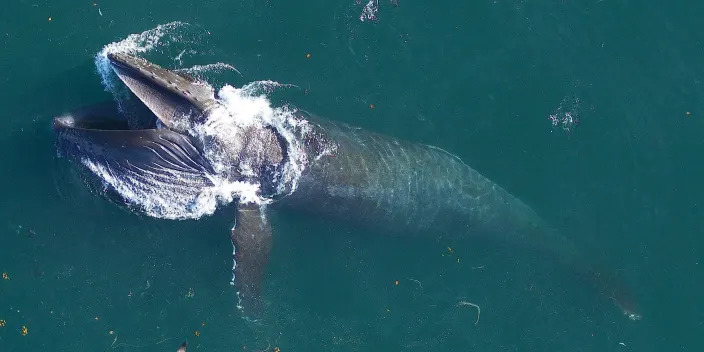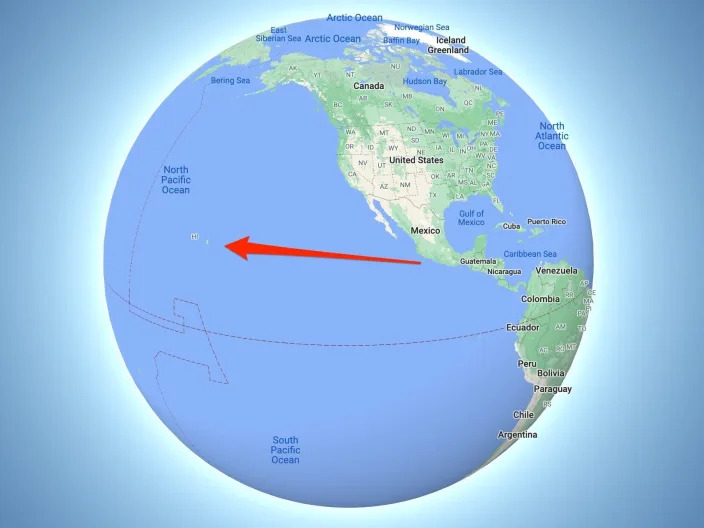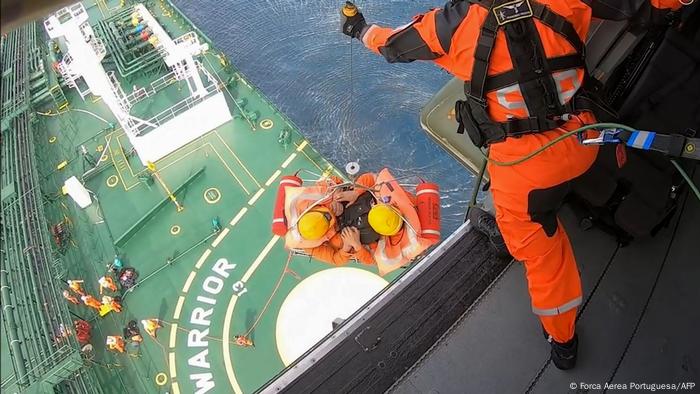


An iceberg floats past Bylot Island in the Canadian Arctic Archipelago on July 24, 2017. The Associated Press said Tuesday, Feb. 15, 2022, that it is assigning more than two dozen journalists across the world to cover climate issues, in the news organization's largest single expansion paid for through philanthropic grants.
DAVID BAUDER
Tue, February 15, 2022,
NEW YORK (AP) — The Associated Press said Tuesday that it is assigning more than two dozen journalists across the world to cover climate issues, in the news organization's largest single expansion paid for through philanthropic grants.
The announcement illustrates how philanthropy has swiftly become an important new funding source for journalism — at the AP and elsewhere — at a time when the industry's financial outlook has been otherwise bleak.
The AP's new team, with journalists based in Africa, Brazil, India and the United States, will focus on climate change's impact on agriculture, migration, urban planning, the economy, culture and other areas. Data, text and visual journalists are included, along with the capacity to collaborate with other newsrooms, said Julie Pace, senior vice president and executive editor.
“This far-reaching initiative will transform how we cover the climate story,” Pace said.
The grant is for more than $8 million over three years, and about 20 of the climate journalists will be new hires. The AP has appointed Peter Prengaman as its climate and environment news director to lead the team.
Five organizations are contributing to the effort: the William and Flora Hewlett Foundation, the Howard Hughes Medical Institute, Quadrivium, the Rockefeller Foundation and the Walton Family Foundation.
It's the most recent of a series of grants the AP has received since the mid-2010s to boost coverage in health and science, religion, water issues and philanthropy itself. Some 50 AP journalists have jobs funded through grants.
For many years, Journalists and philanthropists were more wary of each other. News organizations were concerned about maintaining independence and, until the past two decades, financially secure enough not to need help. Philanthropists didn't see the need, or how journalists could help them achieve their goals.
Nonprofit news organizations like ProPublica and Texas Tribune led the way in changing minds. The Salt Lake Tribune, which in 2019 became a nonprofit to attract more donors, and The Seattle Times are other pioneers.
A grant from the Pulitzer Center on Crisis Reporting was instrumental in AP's coverage of the conflict in Yemen that won a 2019 Pulitzer Prize, said Brian Carovillano, AP news vice president who supervises partnerships and grants. The AP's pandemic coverage has been bolstered by funding from the Howard Hughes Medical Institute’s Department of Science Education.
The climate funding is a big boost after years where the AP was frustrated that the company's ambitions were bigger than its capabilities to achieve them, he said.
“Do you want to do it right or do you want to do it well enough?” Carovillano said. “My answer to that is always that I want to do it right. I want to go as big as we can possibly go, and I think that should always be the AP's ambition.”
The New York Times last year launched its first major grant-funded project, called Headway, devoting a six-person team to produce stories on how people in the past expected the future to play out and how it actually did. One story that resulted was Michael Kimmelman's look at how New York City has rebounded from Superstorm Sandy in 2012.
“As far as we're concerned, it has been really seamless,” said Monica Drake, assistant managing editor at the Times. “It has allowed us to focus on things we want to cover and to do it independently.”
Through a Ford Foundation grant, the Times has also hired a disability fellow to produce stories about disabilities.
The Times is seeking to hire a head of philanthropic partnerships, much like AP is building its own department headed by former global business editor Lisa Gibbs, to work on securing outside support and partnerships for its work.
In 2019, the Lenfest Institute for Journalism gathered 30 people to discuss ideas for funding local news. Now it has more than 1,000, either development professionals or people who work at news organizations, who participate in webinars or other activities trying to advance the same goal, said Annie McCain Madonia, the institute's chief advancement officer.
In recent years, many funders have begun learning about the need to support news, said Joshua Stearns, director of the public square program at the Democracy Fund.
“Funders are seeing news and information about the issues they care about dry up,” Stearns said, “and in place of that are seeing disinformation.”
AP often needs to educate funders upon first approach, explaining the company's worldwide reach and mission to report independently. AP accepts money to cover certain areas but without strings attached; the funders have no influence on the stories that are done, Carovillano said.
Both sides had things to learn.
For Carovillano, it was getting used to the idea that funders weren't just being generous; they had their own goals to achieve. “This is a mutually beneficial arrangement,” he said.
The Knight Foundation, one of the largest journalism funders, is now primarily focused on helping deliver local news on digital platforms, said Alberto Ibarguen, its chief executive officer. He bore witness to a change in attitude among funders who now see journalism as a civic obligation.
Ibarguen called it "one of those overnight sensations that took a long time to build.”
Another major funder, the Ford Foundation, distributed $32.5 million for journalism projects last year, up from $17 million in 2019. That includes $2 million to an effort to provide more opportunities for minority journalists in Detroit.
Carovillano said he's noticed a difference in morale in his organization because of the growth achieved through new funding.
“I think it has changed the mindset of the newsroom a little bit,” he said. “After years of basically feeling a little beleaguered, people are proud that they’re part of an organization that is dreaming really big and actually has the ability to do it.”
While no one underestimates the business challenges that remain for journalism, the Lenfest Institute's Madonia said philanthropic efforts have at least changed the conversation.
“I feel like our language has gone from people talking about local news dying to there being a renaissance of local news,” she said. “If you can provide good, high-quality journalism, people are willing to pay for that, people are willing to support it. I think there's a lot of room for optimism. The trick is, can we move quickly enough?”
___
This story corrects the spelling of the name of an executive from the Lenfest Institute. She is Annie McCain Madonia, not Medonia.



















